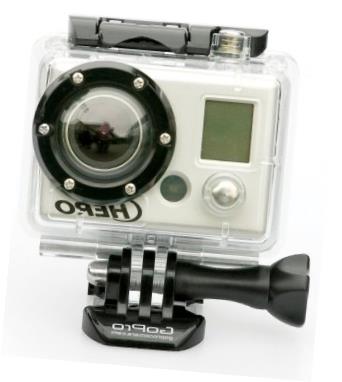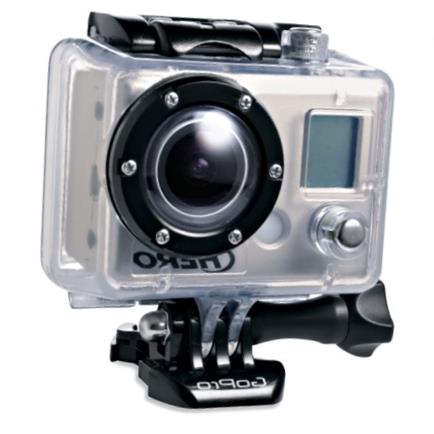
|
|
  |
|
22 Ноя. 2014 г.Gopro hd helmet hero cameraWith both digital and analog signal inputs available to control the taking of photographs or starting and stopping video recording, there are options available that are only limited by your imagination. The GoPro HD Hero Camera is an amazing little unit that comes with a variety of mounting accessories making it ideal for attaching to my helmet when I am paragliding, or to my car when I am driving. MSP430 microprocessor platform of ultra-low power 16-bit RISC mixed-signal microcontrollers from TI provides the ultimate solution for a wide range of low power and portable applications.It should not matter if that is one a minute for a day and a half, or one an hour for several months. For maximum efficiency, turn off the LCD, LED and beeper and operate the camera in stealth mode to reduce power consumption. The timer could also be interfaced with the RF remote control so that it would be possible to control the camera wirelessly, allowing full timer operation of the camera while it is protected by the waterproof housing. Inexpensive remote control timers (intervalometers) are available for many cameras on eBay for under $20. The camera is now 6 months old and has proved to be tough, reliable and produces excellent quality stills and video. Or setting up time-lapse photos that are only taken during the day, controlled by a photocell. Your input and feedback would help me decide which designs to work on and what features would make them more useful to you. We noticed that you're using an outdated browser, the ProductReview website may not display properly. If there is demand, we could arrange for the manufacture of these intelligent controllers for sale at a reasonable price. This is a great gift for Christmas for those active people- it allows you to capture all the action without missing a thing. This was a big head start that allowed me to design and build a controller in just a few hours. A simple two wire approach is used, similar to the LMC555 based shutter control used in my Kite Aerial Photography project a few years ago. There are just so many options available once you can control it with your own custom programmed microprocessor. The workaround is to set the sequence time to P2, so that a photo is taken once every 2 seconds, and timing the power sequence to leave the camera on for 3 seconds. The author assumes no liability for any damage which might occur to your camera or any warranty that these instructions will work for you. Pressing the button in various ways could be used to select among a number of pre-programmed configurations. In one button mode, if you turn on the camera, it will immediately take a photo†, or begin a sequence of photos, or start recording a video, depending on the settings that were saved before turning the camera off. After taking a picture, the camera is turned off until it is woken up to take another photo. The motion detector could be wired directly to the processor or interfaced as an RF remote control allowing more flexibility in placing the motion detector and maintaining the integrity of the waterproof camera. The footage is unbelievable, HD 1080p and it only took a short time to get used to their software and start editing my adventures. Instead of going to sleep, it remained on, depleting the battery in a few hours, even when there is lots of room left on the 32GB SD card.  There is a great user forum following this camera, and gopropit has done some work deciphering the pinouts. After initializing the output and setting up the watchdog timer to interrupt every 256 mSec, it goes to sleep. A simple controller that plugs into the bus connector on the back of the camera and takes time-lapse images every few minutes. On interrupt, it decides what to do next which depends on where it is in the picture taking cycle. The processor could be programmed to shoot several minutes of HD video each time the motion detector is triggered. A small motion detector can be connected to the processor and used to trigger photos or video. It is possible to change the shooting strategy if the battery is getting low or raise an alarm that the battery needs replacing. General disclaimer: All third party trademarks, images and copyrights on this page are used for the purpose of comparative advertising, criticism or review. EZ430 USB stick ($20) and tiny F2012 project board (3 for $10) would be just perfect for this application. That was solved with a capacitor, which is charged by the camera while waiting for the next picture taking cycle. This saves the need for adding push buttons to the processor board and allows for control without opening the case. Much smaller ones are available than the one I had in my junk box, which is rather old technology. A small LCD display could be added to the processor board and used to program the real time clock in order to set up scheduled photos or videos or for the selection of different pre-programmed options. The only problem is that when the pin is grounded to take a picture, there won't be any power for the microprocessor. Even more important, complete development systems for small projects are available for as little as $4.30. If you set up One Button recording in mode P, it will revert to PES mode, which takes a sequence of photos each time the camera is powered on. The first thing I noticed was that the time lapse mode did not turn off the camera between shots. This provides 3.3 volts at up to 2 mA (determined by measuring the current when shorting the pin to ground). That would allow the setting of a date and time for turn-on and very accurate timing between shots if required. Donations to support my time and effort and contributions toward the hosting and bandwidth for the web site are gratefully accepted. The code was compiled with the free version of the IAR Embedded Workbench available from Texas Instruments.  |

 Gopro 3 black характеристики
Gopro 3 black характеристики